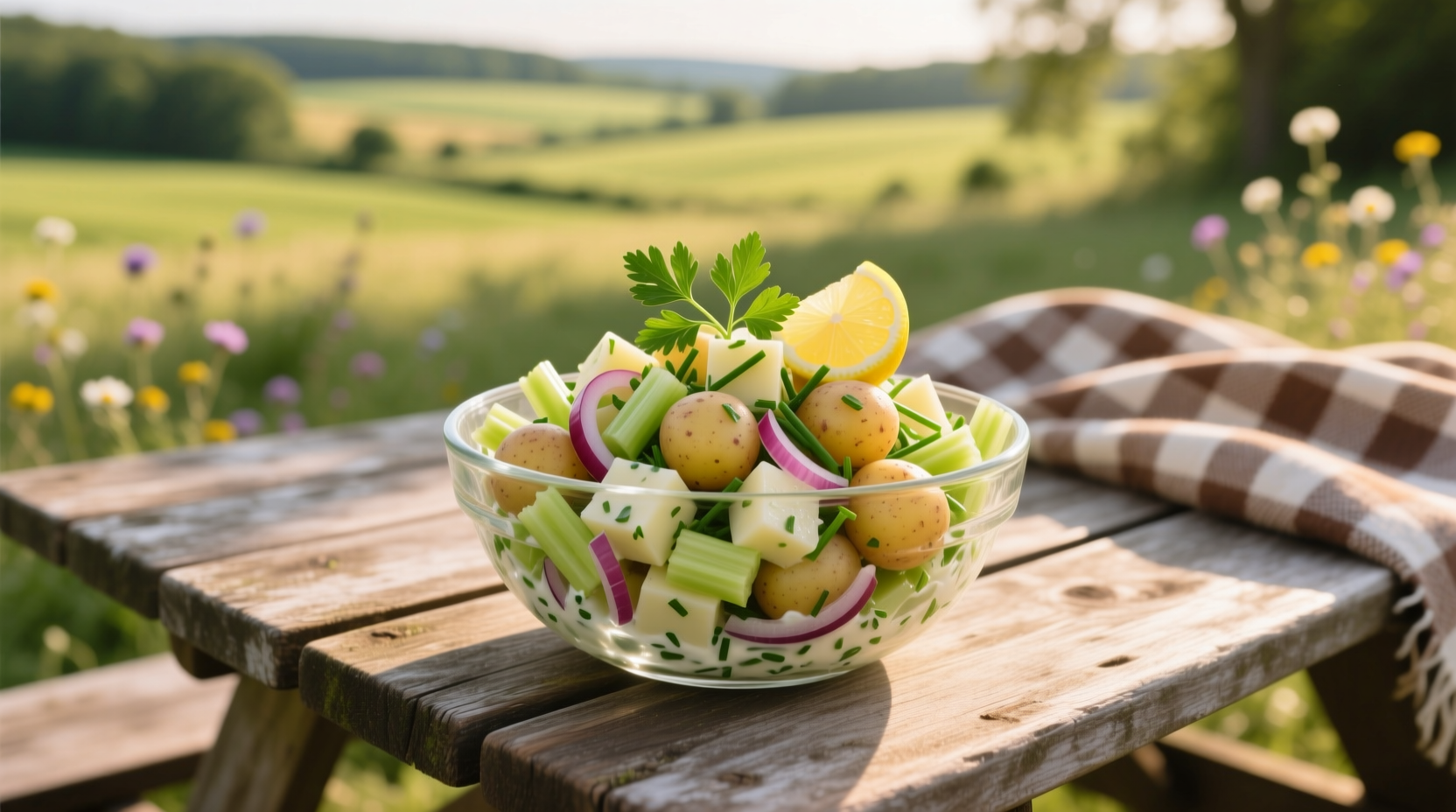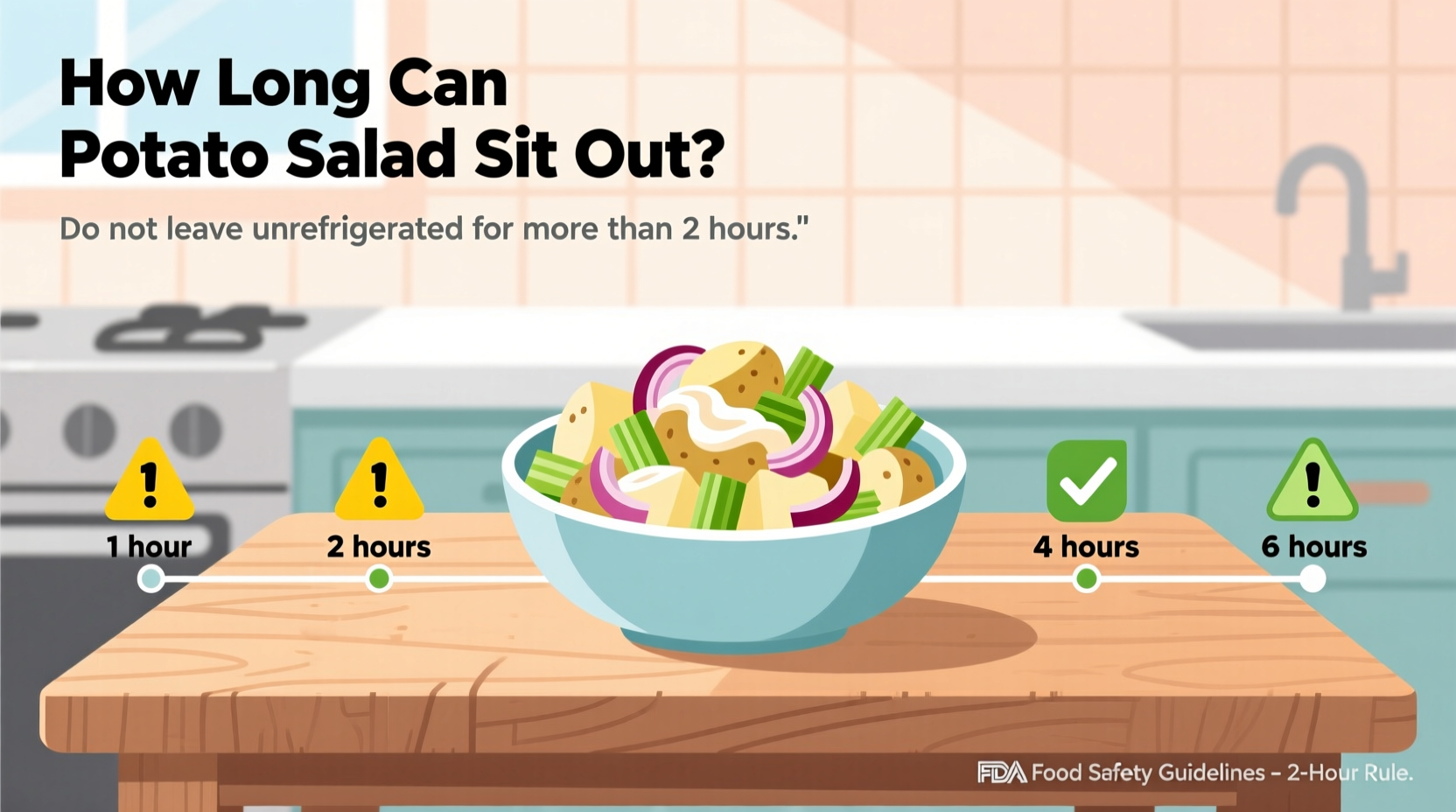The Science Behind Potato Salad Safety
Understanding why timing matters requires examining the food science at play. Potato salad creates an ideal breeding ground for bacteria like Staphylococcus aureus and Clostridium perfringens due to its combination of moisture-rich potatoes, protein-containing eggs, and mayonnaise-based dressing. Despite common misconceptions, commercial mayonnaise's acidity actually helps preserve potato salad—the real risk comes from the starchy potatoes and other ingredients that enter the temperature danger zone between 40°F and 140°F (4°C-60°C).
Official Food Safety Guidelines Explained
The USDA Food Safety and Inspection Service maintains strict standards for perishable foods. Their bacteria and food safety guidelines confirm that cooked foods like potato salad enter the high-risk category requiring prompt refrigeration. Similarly, the FDA Food Code specifies that potentially hazardous foods must be maintained outside the temperature danger zone to prevent pathogen multiplication.
| Temperature Condition | Maximum Safe Time | Recommended Action |
|---|---|---|
| Below 70°F (21°C) | 2 hours | Refrigerate immediately after serving |
| 70°F-90°F (21°C-32°C) | 90 minutes | Use ice trays to maintain cold temperature |
| Above 90°F (32°C) | 1 hour | Discard after serving period ends |
How Bacteria Multiply in Unrefrigerated Potato Salad
Food safety researchers at institutions like the National Center for Home Food Preservation have documented the alarming speed of bacterial growth in perishable dishes. Within the first 30 minutes at room temperature, bacteria begin multiplying slowly. By the 60-minute mark, populations double. At 90 minutes, the growth becomes exponential—reaching potentially dangerous levels by the 2-hour threshold. This timeline explains why the "two-hour rule" exists as a critical food safety boundary.
Practical Serving Strategies for Different Scenarios
When planning events, consider these context-specific approaches:
Picnics and Outdoor Gatherings
Transport potato salad in a cooler with ice packs and place the serving bowl inside a larger container filled with ice. For extended events, prepare smaller batches and rotate them from the refrigerator. The CDC specifically warns that outdoor events during summer months require extra precautions due to higher ambient temperatures accelerating bacterial growth.
Buffet Service at Room Temperature
Use chilled serving trays with built-in ice compartments. Replace serving dishes every 60-90 minutes with freshly refrigerated portions. Never combine new potato salad with leftovers from the serving dish—this introduces bacteria into the fresh batch.
Leftovers After an Event
Refrigerate within the two-hour window, storing in shallow containers no deeper than 2 inches to ensure rapid cooling. Properly stored potato salad remains safe for 3-5 days. The University of Nebraska-Lincoln Food Safety department confirms that proper refrigeration slows bacterial growth to safe levels, extending shelf life significantly.
Warning Signs Your Potato Salad Has Spoiled
Before consuming refrigerated potato salad, check for these spoilage indicators:
- Visible mold growth (fuzzy spots of white, green, or black)
- Unpleasant sour or acidic smell beyond normal vinegar/mayo scent
- Slippery or slimy texture on potatoes or other ingredients
- Unusual liquid separation that doesn't mix back in when stirred
When in doubt, throw it out. The USDA emphasizes that harmful bacteria often don't produce visible changes, so absence of obvious spoilage doesn't guarantee safety.
Common Misconceptions About Potato Salad Safety
Many believe mayonnaise is the primary culprit in spoiled potato salad, but commercial mayonnaise's vinegar and salt content actually inhibits bacterial growth. The real risks come from:
- Improperly cooled cooked potatoes introducing bacteria during preparation
- Cross-contamination from cutting boards or utensils
- Extended time in the temperature danger zone during serving
Homemade mayonnaise without proper acidification poses greater risks than commercial varieties, but the potatoes remain the most vulnerable component.

Best Practices for Maximum Freshness and Safety
Follow these professional kitchen techniques to extend your potato salad's safe serving window:
- Cook potatoes until just tender, then cool rapidly under cold running water
- Refrigerate dressed potato salad for at least 4 hours before serving
- Use acidified dressings with vinegar or lemon juice for additional protection
- Keep serving portions small and replenish from refrigerated batches
- Monitor ambient temperature with a food thermometer during outdoor events
Remember that food safety guidelines exist to prevent serious illness. The Centers for Disease Control estimates that foodborne illnesses affect 1 in 6 Americans annually, with potato salad frequently implicated in summer outbreaks due to improper temperature control.
When to Discard Potato Salad Immediately
Certain situations require immediate disposal regardless of time elapsed:
- Power outage exceeding 4 hours with warm refrigerator temperatures
- Visible contamination from insects or other sources
- Temperature abuse during transportation (e.g., left in hot car)
- Extended power outage with uncertain refrigerator performance
Food safety experts consistently emphasize that when questionable food safety situations arise, the safest choice is always to discard potentially compromised food.
Food Safety Resources for Home Cooks
For additional guidance, consult these authoritative sources:
- USDA FoodKeeper App - Provides storage timelines for hundreds of foods
- CDC Food Safety Resources - Current outbreak information and prevention tips
- FDA Food Safety Education - Comprehensive guides for consumers











 浙公网安备
33010002000092号
浙公网安备
33010002000092号 浙B2-20120091-4
浙B2-20120091-4